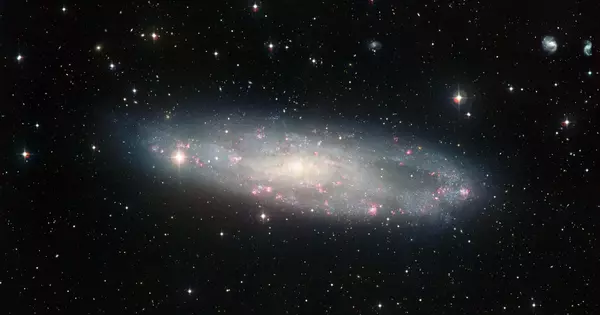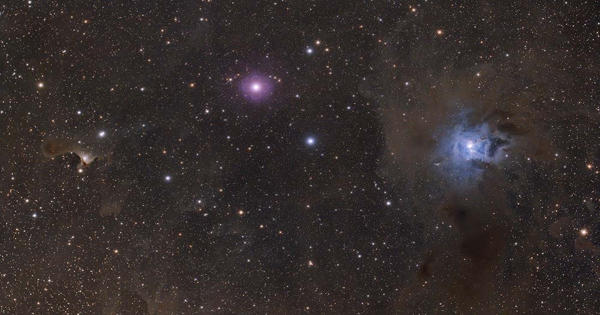A dwarf spiral galaxy is a scaled-down spiral galaxy. It is a form of galaxy that has features of both spiral and dwarf galaxies. It is also known as a dwarf spiral or dwarf disc galaxy. Dwarf galaxies have low luminosities, tiny diameters (less than 5 kpc), poor surface brightness, and low hydrogen masses. Galaxies are huge systems of gravitationally bound stars, gas, dust, and dark matter. The galaxies can be classified as a subclass of galaxies with low surface brightness.
Spiral galaxies are distinguished by their spiral arms, which radiate from a central bulge. The arms typically contain young, hot stars, whereas the central bulge typically contains older stars. Spiral galaxies range in size from giant spirals like our Milky Way to small spirals. Dwarf galaxies, on the other hand, are significantly smaller and have fewer stars than their larger counterparts. They are among the most numerous forms of galaxies in the cosmos. Dwarf galaxies can be elliptical, irregular, or spiral in some cases.
Dwarf spiral galaxies are extremely rare, especially dwarf counterparts of Sa-Sc type spiral galaxies. Dwarf elliptical galaxies, dwarf irregular galaxies, and dwarf forms of Magellanic type galaxies (which may be considered transitory between spiral and irregular in terms of morphology) are, on the other hand, highly frequent.
Dwarf spiral galaxies have characteristics of both types. They have a flattened disk-like structure with spiral arms, but are far less in size and mass than spiral galaxies. Despite their small size, they can have a variety of shapes, such as a centre bulge and a flattened disc with spiral arms.
It has been proposed that dwarf spiral galaxies can undergo transformation into dwarf elliptical galaxies, particularly in dense cluster environments. Astronomers and cosmologists are particularly interested in these galaxies because their study can reveal insights on galaxy formation, evolution, and the role of dark matter in altering the structure of galaxies. They are particularly important in understanding the larger-scale structure of the universe since they are frequently found in clusters, interact with other galaxies, and are sensitive to various environmental factors.
















